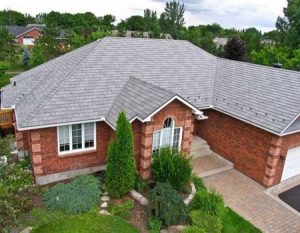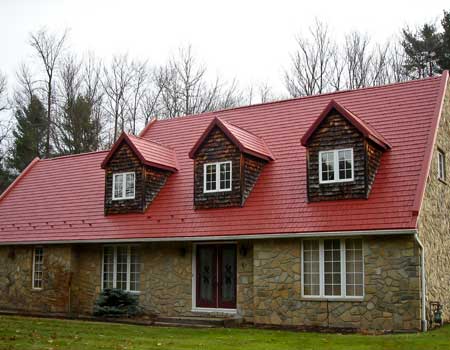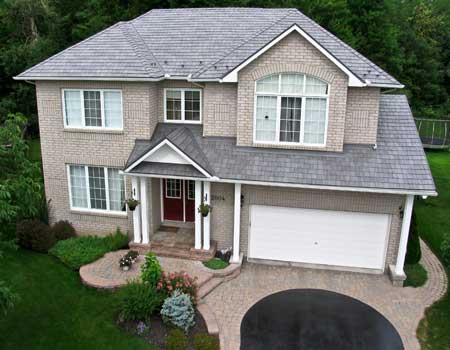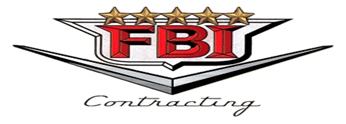The Ultimate Guide to Keeping Your Metal Roofing, Siding, and Buildings in Top Condition
 Metal roofing, siding, and post-frame buildings are durable and low maintenance, but they still require some basic care to keep them looking their best and lasting for many years.
Metal roofing, siding, and post-frame buildings are durable and low maintenance, but they still require some basic care to keep them looking their best and lasting for many years.
Why is maintenance important?
Even though metal is a weather-resistant material, it can still be damaged by dirt, debris, and other elements. If left unchecked, these problems can lead to leaks, dents, scratches, fading, corrosion, and other issues that can compromise the integrity and lifespan of your metal system.
What should you do to maintain your metal system?
A basic annual maintenance routine can help you prevent these problems and keep your metal system looking and performing its best. This includes:
1) Inspecting your roof for damage. Look for dents, scratches, loose flashing, or other signs of wear and tear.
2) Cleaning your roof. Use a mild detergent and water to remove dirt, debris, and algae growth.
3) Sealing your roof. This will help protect it from moisture and corrosion.
4) Inspecting your gutters and downspouts. Make sure they are free of debris and that they are draining properly.
Here are some additional tips for maintaining your metal system:
1) Do not walk on your roof unless it is absolutely necessary. Walking on a metal roof can damage the panels and lead to leaks.
2) If you do need to walk on your roof, use a ladder and wear proper safety gear.
3) Be careful when using power tools on your roof. Sparks from power tools can start fires.
4) If you notice any damage to your metal system, do not delay in repairing it. Early repairs can help prevent more serious problems down the road.
How often should you maintain your metal system?
The frequency of maintenance depends on several factors, such as:
1) The type and quality of your metal roof panels, siding, and coatings: Metal roofs with high-quality coatings can last for many years without needing much maintenance. However, roofs with lower-quality coatings may need to be cleaned and sealed more often.
2) The design and installation of your metal system: Roofs that are well-designed and installed are less likely to leak or suffer damage from wind or snow.
3) The location and climate of your property: Roofs in areas with harsh weather conditions, such as high winds or heavy rains, may need to be maintained more often.
4) The exposure and orientation of your metal system: Roofs that are exposed to the elements more directly, such as those facing south or west, may need to be maintained more often.
5) The amount and type of dirt and debris on your metal system: Roofs that are covered in dirt, debris, or algae may need to be cleaned more often.
As a general rule of thumb, you should perform basic metal roofing maintenance tasks on your metal system at least once a year. However, you may need to do it more frequently if you live in an area with harsh weather conditions, have trees or other objects near your metal system, or notice any signs of damage or wear.
Here are some specific maintenance tasks that you can do to keep your metal system in good condition:
1) Inspect your roof for damage. Look for dents, scratches, loose flashing, or other signs of wear and tear.
2) Clean your roof. Use a mild detergent and water to remove dirt, debris, and algae growth.
3) Seal your roof. This will help protect it from moisture and corrosion.
4) Inspect your gutters and downspouts. Make sure they are free of debris and that they are draining properly.
How to Clean Metal Panels
Cleaning your metal panels is an important maintenance task that can help to remove dirt, dust, grime, stains, mildew, algae, bird droppings, and other elements that can damage the metal roof paint or discolor the metal roof paint. It will also help to improve the appearance, reflectivity, energy efficiency, surface corrosion, and performance of your metal panels.
CALL US: (603) 286-4414 OR CLICK TO EMAIL


Here are some steps to follow when cleaning your metal panels:
1) Choose a dry, overcast day. Avoid cleaning your metal panels in direct sunlight, as this can cause glare, heat, and evaporation. Choose a day when the weather is mild and dry, preferably with overcast skies.
2) Prepare the cleaning solution. Use plain water or a mild cleaner or detergent that is compatible with your metal panels. Avoid using abrasive, acidic, alkaline, or solvent-based cleaners, as these can damage or discolor your metal panels. Also avoid using bleach, ammonia, chlorine, or other harsh chemicals, as these can cause corrosion or galvanic action. Check the label of the cleaner or detergent for any warnings or instructions. Dilute the cleaner or detergent with water according to the manufacturer’s recommendations.
3) Wet the surface. Use a hose or pressure washer to wet the surface of your metal panels. Start from the top and work your way down. Use low to moderate pressure, as high pressure can damage or dent your metal panels. Avoid spraying water under flashings, eaves, gutters, hips, valleys, seams, edges, or any other openings where water can enter.
4) Apply the cleaning solution. Use a soft cloth, sponge, broom, or brush to apply the cleaning solution to your metal panels. Work in small sections at a time. Scrub gently in circular motions. Do not use steel wool, wire brushes, scouring pads, sandpaper, or any other abrasive tools, as these can scratch or damage your metal panels.
5) Rinse thoroughly. Use a hose or pressure washer to rinse off the cleaning solution from your metal panels. Start from the top and work your way down. Use low to moderate pressure. Rinse until no traces of soap or dirt remain.
6) Dry the surface. Use a soft cloth or towel to dry the surface of your metal panels. Alternatively, let the air dry naturally.
7) Repeat if necessary. If there are still stubborn spots or stains on your metal panels after cleaning them once, repeat the process until they are gone.
HOW TO INSPECT YOUR METAL PANELS FOR SIGNS OF DAMAGE OR WEAR
Metal panels are a durable roofing material, but they can still suffer damage or wear over time. It is important to inspect your metal panels regularly for signs of damage or wear so that you can address any problems early on.
Here are some things to look for when inspecting your metal panels:
1) Rust or corrosion. This is one of the most common signs of damage on metal panels. Rust can be caused by moisture, so it is important to check for any areas where water may be pooling or leaking.
2) Dents or dings. These can be caused by hail, wind, or other objects. If the dents or dings are minor, you may be able to repair them yourself. However, if they are more severe, you will need to have them repaired by a professional.
3) Cracks or holes. These can be caused by hail, wind, or other objects. If the cracks or holes are small, you may be able to repair them yourself. However, if they are more severe, you will need to have them repaired by a professional.
4) Loose or missing screws or nails. This can allow water to seep in and cause damage. Make sure that all of the screws and nails are tight and secure.
5) Faded or peeling paint. This can be caused by the sun’s UV rays. If the paint is peeling, you will need to have it repainted.
6) Missing or damaged flashing. Flashing is used to seal the seams between metal panels and other parts of the roof, such as the chimney or skylight. If the flashing is missing or damaged, it can allow water to seep in and cause damage.
If you find any signs of damage or wear on your metal panels, it is important to address them as soon as possible. Ignoring the problem could lead to further damage, which could eventually require a more costly repair.
Here are some tips for inspecting your metal panels:
1) Do it regularly. The best way to catch any problems early is to inspect your metal panels regularly. A good rule of thumb is to inspect them once a year.
2) Do it thoroughly. Don’t just look at the obvious areas. Get up on a ladder and inspect the entire roof, including the eaves, valleys, and flashing.
3) Be aware of your surroundings. Be careful not to slip or fall while you are inspecting your roof.
4) Get help if you need it. If you are not comfortable inspecting your roof yourself, hire a professional roofer to do it for you.
HOW TO REPAIR OR REPLACE DAMAGED METAL PANELS OR ACCESSORIES
Here are some steps on how to repair or replace damaged metal panels or accessories:
1) Inspect the damage. Assess the extent of the damage to determine if it can be repaired or if it needs to be replaced. If the damage is minor, you may be able to repair it yourself. However, if the damage is more severe, you will need to have it repaired by a professional.
2) Gather your tools and materials. If you are repairing the damage yourself, you will need to gather the necessary tools and materials. This may include a hammer, nails, screws, metal sealant, paint, and a ladder.
3) Repair the damage. If the damage is minor, you can usually repair it yourself. For example, if there is a dent in the metal, you can use a hammer to flatten it out. If there is a hole in the metal, you can use screws or nails to patch it up.
4) Replace the damaged panel. If the damage is more severe, you will need to replace the damaged panel. To do this, you will need to remove the old panel and install a new one.
5) Seal the seams. Once the new panel is installed, you will need to seal the seams to prevent water from seeping in. You can use a metal sealant or roofing tar to do this.
6) Paint the panel. If the panel is not already painted, you will need to paint it to protect it from the elements.
Here are some tips for repairing or replacing damaged metal panels or accessories:
1) Be careful not to damage the surrounding panels. When you are repairing or replacing a damaged panel, be careful not to damage the surrounding panels. This could make the damage worse or require additional repairs.
2) Use the right tools and materials. Make sure that you are using the right tools and materials for the job. Using the wrong tools or materials could damage the panels or make the repairs less effective.
3) Follow the manufacturer’s instructions. If you are repairing or replacing a panel that is under warranty, make sure that you follow the manufacturer’s instructions. This will help to ensure that the repairs are done correctly and that the warranty is still valid.
4) Get help if you need it. If you are not comfortable repairing or replacing the damaged panel yourself, hire a professional to do it for you. This is especially important if the damage is severe or if you are not sure how to do it correctly.
By following these tips, you can help to ensure that your repairs are done correctly and that your metal panels or accessories last for many years to come.
FBI’s Guide Summary on How to Care for Metal Roofing and Siding
Metal roofing, metal siding, and metal post-frame buildings are durable, long-lasting, energy-efficient, and low-maintenance materials that are a smart choice for your property. However, even low-maintenance materials still require some basic care to keep them in top shape and protect your investment.
Here are some basic care tasks that you should perform on your metal panels at least once a year:
1) Inspect the panels for signs of damage or wear. Look for rust, dents, holes, loose screws or nails, faded or peeling paint, and missing or damaged flashing.
2) Clean the panels to remove dirt, debris, and algae. Use a mild detergent and water, and be sure to rinse thoroughly.
3) Inspect the gutters and downspouts for clogs. Clear any clogs to prevent water from backing up and damaging the panels.
4) Apply a coat of sealant to protect the panels from the elements. Follow the manufacturer’s instructions for the type of sealant to use and the application process.
By following these basic care tasks, you can help to extend the life of your metal panels and keep them looking great for years to come. If you are not comfortable performing these tasks yourself, you can hire a professional roofing contractor to do them for you. We hope this guide was helpful and informative. If you have any questions or comments, please feel free to contact us. We’d love to hear from you.


